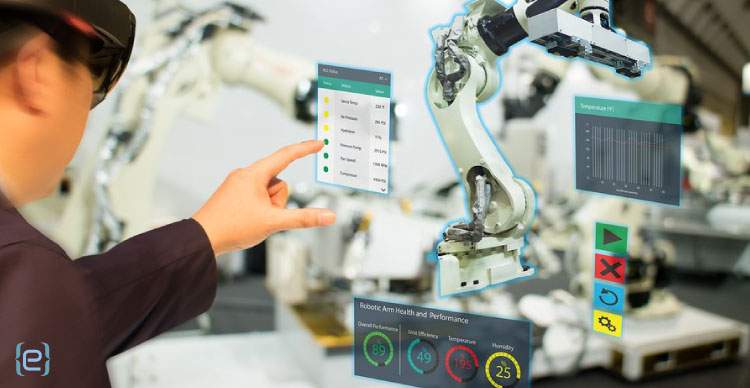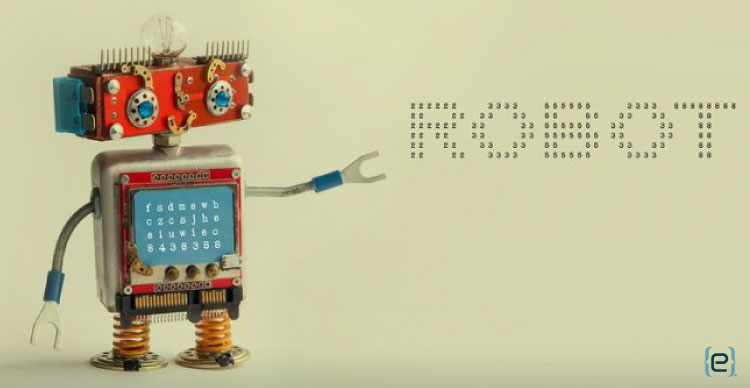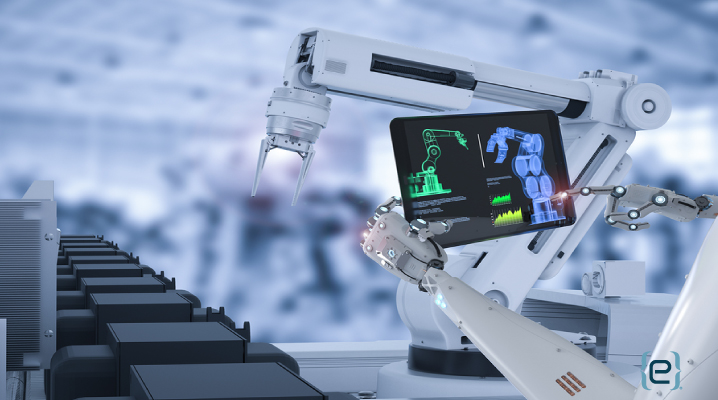In 1962, General Motors installed the UNIMATE robot in its factory in New Jersey, becoming the first major manufacturer to implement an industrial robot. Fifty years later, manufacturing robots are now taking center stage in the latest industrial revolution.
Recent market studies show signs of an unprecedented boom in industrial robotics. An estimated 1.3 million manufacturing robots will be delivered to factories globally in 2018. Between now and 2020, the number is forecasted to grow by an average of 14% annually.
Long a staple in the automotive industry, robots have begun to gain prominence in warehouse and logistics applications, aerospace, woodworking and construction, and more. Increased capabilities and lower costs drive the growth, fueled by advances in artificial intelligence and sensor technology.
Several key trends in robotics will change the face of industry. These include advances in collaborative robots,cloud robotics, and increasing adoption of robot technologies by small to mid-size businesses.

Collaborative Robots
Collaborative robots, or cobots, do just what their name suggests. They collaborate, most importantly with humans, but also with other robots. Cobots differ from traditional robots in that they are:
- Designed to work with humans — Unlike traditional robots, which typically work in fenced-off areas, cobots work side-by-side with humans. Sensor technology assists navigation and ensures safety.
- Lightweight and movable — Due to the types of tasks they are designed to complete, cobots tend to be much lighter than traditional robots. This, in turn, makes it easy for workers to transport them from one task location to another.
- Simple to use — Operators with no programming experience can operate cobots using touch screen devices or even voice commands. Unlike robots dedicated to a single task, cobots offer flexibility, switching tasks with a simple program change.
While cobots currently make up only three percent of all robot sales, that number is expected to jump to thirty-four percent by 2025. Extremely capable and flexible, cobots are also affordable. As motion sensing and artificial intelligence technologies get cheaper, collaborative robots become both more accessible and more capable.

Cloud Robotics
With an increasing number of robots depending on cloud-based software to deliver programming, cloud robotics offers significant benefits to manufacturing. Like other cloud applications, Robotics as a Service (RaaS) promises scalability, ease of maintenance, and cost reduction. RaaS can refer to both a technical method and a business model.
Robots require an immense amount of programming to perform their assigned tasks. Storing that software in the cloud means that engineers can quickly and remotely adjust programming instructions. Instead of working with a single robot at a time, engineers can update multiple robots simultaneously.
As a business model, RaaS is still in the early stages. Some innovative manufacturers have begun to offer robots for rent, and the concept is catching on. With the opportunity to lease robots on a monthly or quarterly basis, manufacturers can reap the benefits of robotics without making the capital investment.
The service provider maintains the manufacturing robots and handles integration between robots and other factory systems. With the provider keeping abreast of advancements in robotics, the business can focus on innovation in manufacturing.
Good News for SMB Manufacturers
These trends in collaborative robots and RaaS are good news for small to mid-size manufacturers. Smaller businesses need the competitive edge that manufacturing robots provide. Until recently, however, cost and complexity put robots out of reach for most SMBs.
Now, a small business can lease a cobot to perform specific tasks on a production line. Because the robot is easy to train and operate, the organization can deploy the robot quickly, without the need to hire specialized personnel. Collaborative robots ease concerns about worker safety, and leasing options make implementation affordable.
 Manufacturing Robots First Steps
Manufacturing Robots First Steps
For small businesses looking to implement manufacturing robots as the next phase in building a smart factory, an important initial step is to partner with digital experts. Beginning the move to cloud-based operations sets the stage for taking advantage of cloud robotics and other advances in robotics technology.
Professional manufacturing technology experts expertly guide small to mid-size businesses through the process of digital transformation. Award-winning managed services providers offer customized cloud solutions and cutting edge cyber-security to set you on the road to greater efficiency and productivity.













